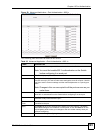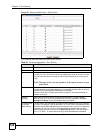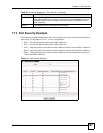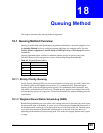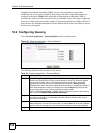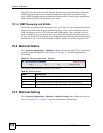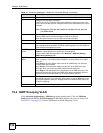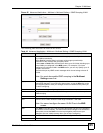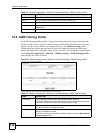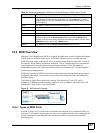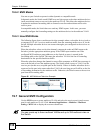
ES-2024 Series User’s Guide
131
CHAPTER 19
Multicast
This chapter shows you how to configure various multicast features.
19.1 Multicast Overview
Traditionally, IP packets are transmitted in one of either two ways - Unicast (1 sender to 1
recipient) or Broadcast (1 sender to everybody on the network). Multicast delivers IP packets
to just a group of hosts on the network.
IGMP (Internet Group Management Protocol) is a network-layer protocol used to establish
membership in a multicast group - it is not used to carry user data. Refer to RFC 1112, RFC
2236 and RFC 3376 for information on IGMP versions 1, 2 and 3 respectively.
19.1.1 IP Multicast Addresses
In IPv4, a multicast address allows a device to send packets to a specific group of hosts
(multicast group) in a different subnetwork. A multicast IP address represents a traffic
receiving group, not individual receiving devices. IP addresses in the Class D range (224.0.0.0
to 239.255.255.255) are used for IP multicasting. Certain IP multicast numbers are reserved by
IANA for special purposes (see the IANA web site for more information).
19.1.2 IGMP Filtering
With the IGMP filtering feature, you can control which IGMP groups a subscriber on a port
can join. This allows you to control the distribution of multicast services (such as content
information distribution) based on service plans and types of subscription.
You can set the Switch to filter the multicast group join reports on a per-port basis by
configuring an IGMP filtering profile and associating the profile to a port.
19.1.3 IGMP Snooping
The Switch can passively snoop on IGMP packets transferred between IP multicast routers/
switches and IP multicast hosts to learn the IP multicast group membership. It checks IGMP
packets passing through it, picks out the group registration information, and configures
multicasting accordingly. IGMP snooping allows the Switch to learn multicast groups without
you having to manually configure them.



